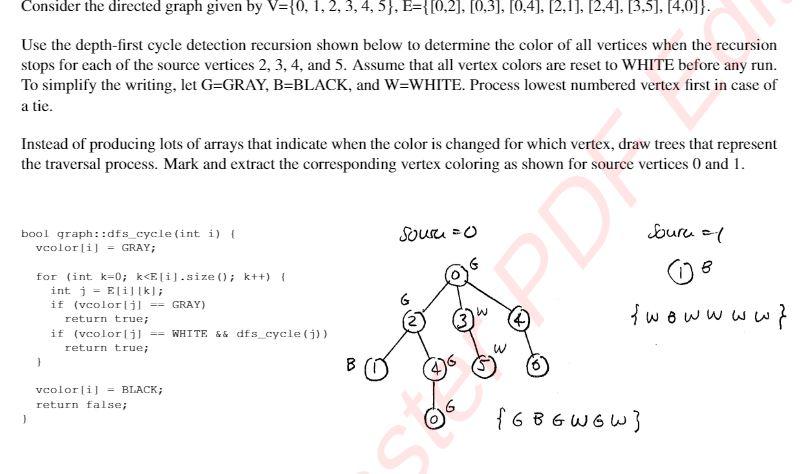Answered step by step
Verified Expert Solution
Question
1 Approved Answer
Consider the directed graph given by V={0, 1, 2, 3, 4, 5), E={[0,2), (0,3), (0,4), (2,1), (2,4), (3,5), (4,0]}. Use the depth-first cycle detection recursion

Step by Step Solution
There are 3 Steps involved in it
Step: 1

Get Instant Access to Expert-Tailored Solutions
See step-by-step solutions with expert insights and AI powered tools for academic success
Step: 2

Step: 3

Ace Your Homework with AI
Get the answers you need in no time with our AI-driven, step-by-step assistance
Get Started


